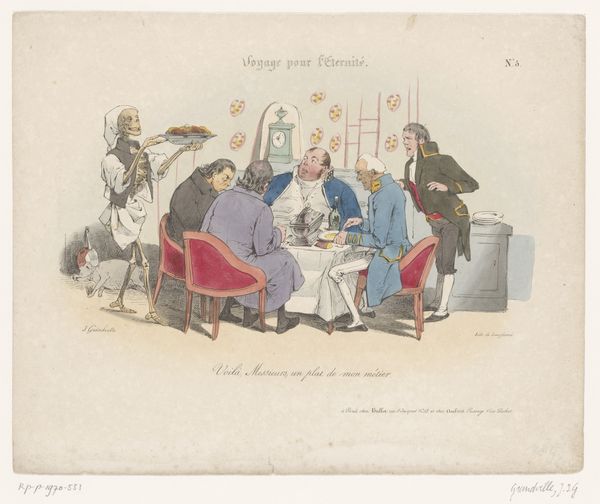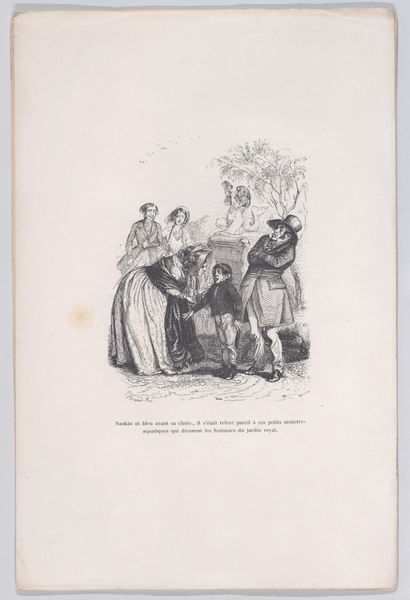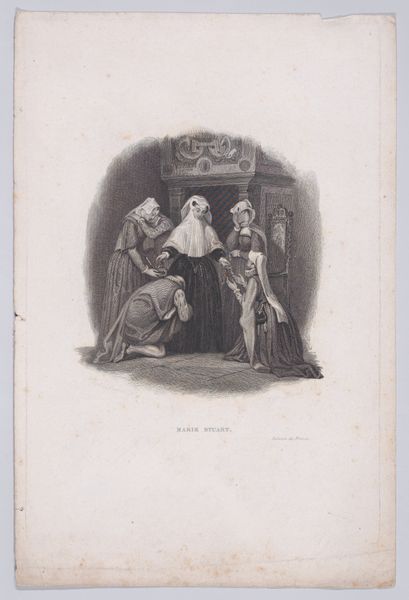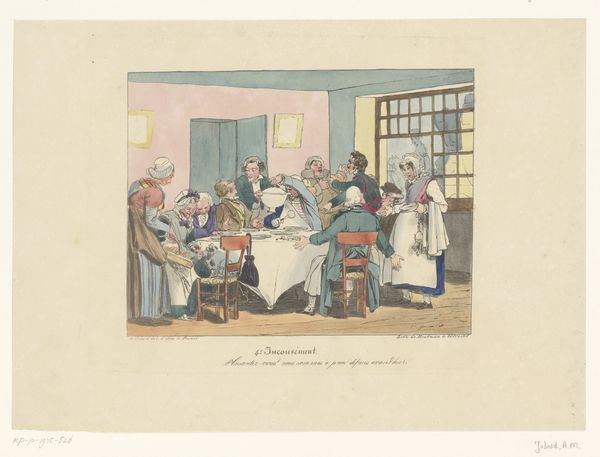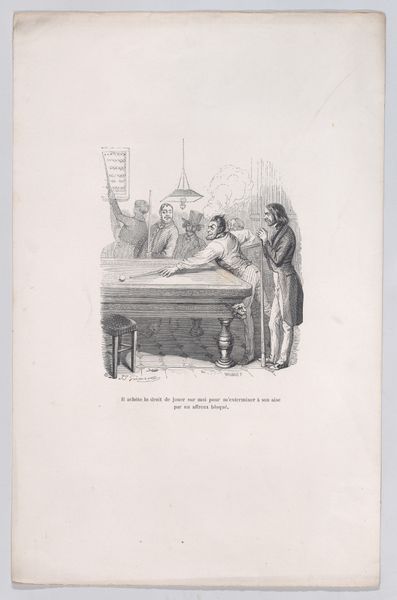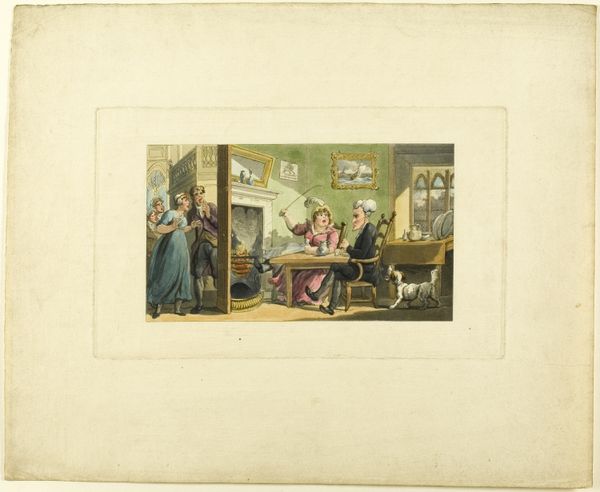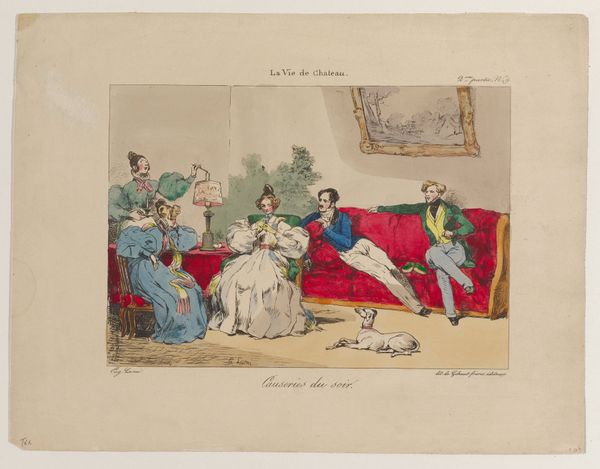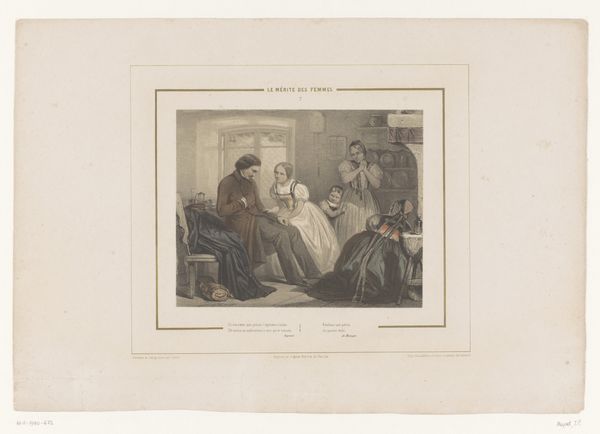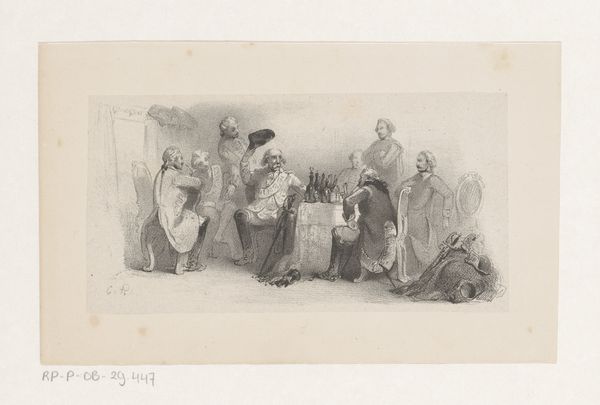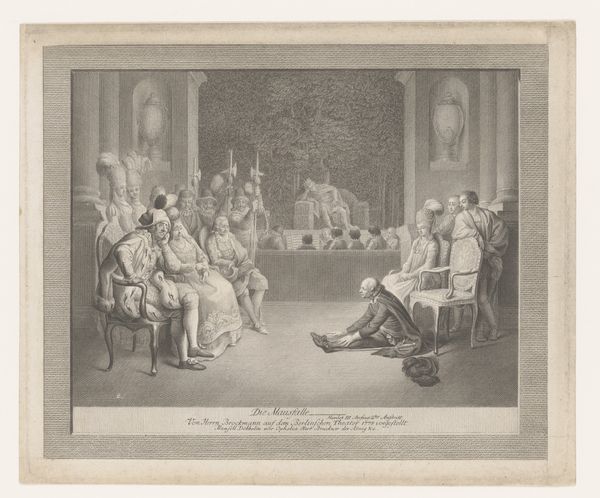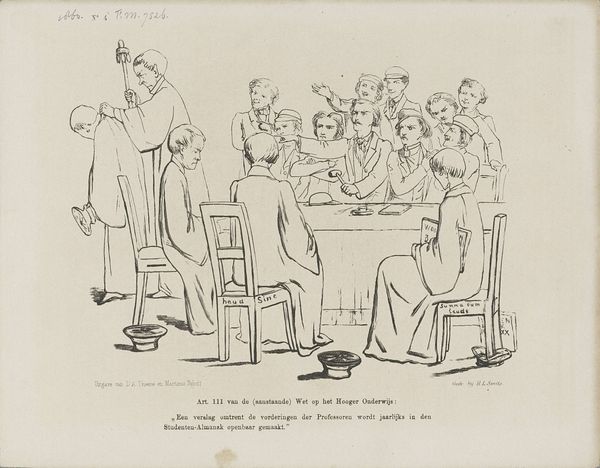
drawing, coloured-pencil, print, watercolor
#
drawing
#
coloured-pencil
#
water colours
# print
#
caricature
#
dog
#
watercolor
#
coloured pencil
#
romanticism
#
men
#
watercolour illustration
#
genre-painting
#
watercolor
Dimensions: Sheet: 10 1/8 × 13 7/16 in. (25.7 × 34.2 cm)
Copyright: Public Domain
Curator: This intriguing print before us is titled "Journey for Eternity, No. 6," and it hails from the prolific imagination of J. J. Grandville, dating approximately from 1834 to 1844. He rendered this using watercolor and coloured pencil. Editor: Well, immediately, I'm struck by the rather grim feast being served. It's macabre yet humorous. A skeleton, acting as a waiter, offers a platter of… well, what I hope aren't heads, to a table of rather oblivious gentlemen. Curator: Indeed. Grandville was known for his satirical caricatures. Consider the social commentary at play: the French aristocracy and bourgeoisie indulging in earthly pleasures while Death stands ready to collect. We must situate this image within the socio-political ferment following the French Revolution and the subsequent Restoration. It speaks volumes about class, excess, and mortality. Editor: I see that tension so clearly. These men, likely figures of power or wealth, are engrossed in their meal, their privilege blinding them. It speaks to systemic inequalities, then as now. And what is particularly provocative is the detail with which the artist conveys what are literally the "powers that be", blind to the realities for those outside the confines of their banquet table. Curator: Furthermore, Grandville’s usage of anthropomorphic figures – the dog and serving skeleton– adds another layer. Animals served often as reflections, amplified reflections of societal behaviours and flaws. Editor: Precisely! Death isn't this grand, abstract concept, but a servant, almost normalized. It becomes part of their lives, literally a "Voyage pour l'éternité" that they aren't truly acknowledging in how they conduct themselves. The artwork speaks to accountability, urging its viewers to look critically at our institutions, social circles, and lifestyles, and consider how we contribute to systemic issues of injustice and inequality. Curator: So well said. We must see Grandville not just as a cartoonist, but a potent voice within a turbulent era, revealing deeper truths about society. Editor: I agree wholeheartedly. This drawing does not feel remote. It is a commentary on enduring aspects of humanity and structures that must be challenged constantly, using a grotesque and unforgettable scene.
Comments
No comments
Be the first to comment and join the conversation on the ultimate creative platform.
